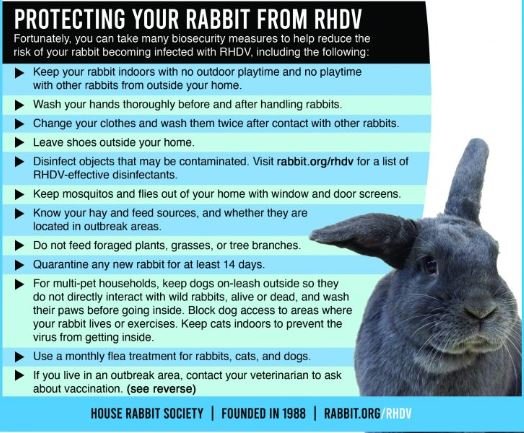Safety guidelines released for deadly rabbit virus found in Palm Springs
Last week, the California Department of Fish and Wildlife announced that a jackrabbit found dead in Palm Springs tested positive for Rabbit Hemorrhagic Disease, a highly contagious and deadly disease among all rabbits.
The infected rabbit was found among 10 other dead rabbits at a property in Palm Springs.
It is the first time that the disease has been found in California.
More Details: Deadly rabbit disease found in Palm Springs; 1st-time disease is found in CA
The disease does not affect humans or other animals, but it can be spread by humans to rabbits.
CDFW officials worry it could significantly impact wild rabbit populations in California, particularly endangered species, as all rabbit, jackrabbit, hare, and pika species as it is highly contagious.
Officials also expressed their worries that it could have a big effect on species that depend on rabbits for food.
At this time, no other California rabbit populations are known to be infected, but the disease has spread quickly in other states, according to CDFW officials. Rabbit Hemorrhagic Disease has killed rabbits in New Mexico, Colorado, Arizona, Texas, and Mexico since March 2020.
On Tuesday, Dr. Sara Strongin, staff veterinarian for the Riverside County
Department of Animal Services issued guidelines for those who own domestic rabbits or who come into contact with wild hares:
- House rabbits should remain inside at all times to minimize
potential contact; - Any sick or dead rabbits should be reported to state wildlife
officials and should NOT be touched; - Any unusual illness or sudden rabbit deaths should be reported to
your veterinarian immediately; - The virus is highly contagious and can be spread by direct contact
with infected animals and/or their urine/feces; can also be spread on
contaminated objects, insects, etc., therefore good hygiene practices are necessary -- i.e. wash hands thoroughly before and after handling rabbits, thorough disinfection, leave shoes outside, insect control, etc. - Know your hay/feed sources and if they are near areas affected by
the outbreak; - Keep dogs on a leash when outside so they don't interact with wild
rabbits; consider having dogs wear booties when outside, or wash their paws before they come inside. Keep dogs and rabbits in separate areas of your home.

Symptoms for Rabbit Hemorrhagic Disease include:
- Loss of appetite
- Lethargy
- High fever
- Seizures
- Jaundice
- Bleeding from nose, mouth, or rectum
- Difficulty breathing
- Sudden death
CDFW officials noted that infected rabbits may exhibit no symptoms leading up to their sudden death.
The CDFW asks that anyone who lives, works or recreates in wild rabbit habitat to report any sightings of sick or dead rabbits to CDFW's Wildlife Investigations Laboratory by calling (916) 358-2790 or file an online mortality report.
You can learn more about the disease at Rabbit.org/rhdv/.



